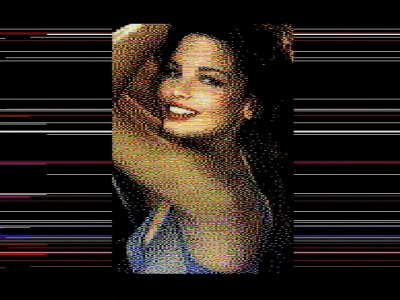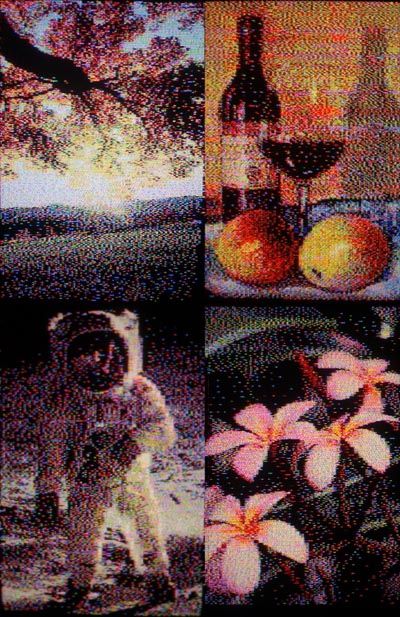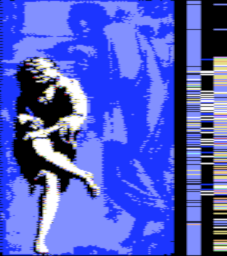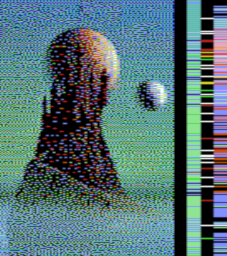
Announcement/Download
The VIC-chip on the VIC-20 can only display graphics by redefining characters. With 256 different characters of 8x8 dimensions this would only allow for pictures of up to 16384 pixels, which is probably why the engineers provided the VIC with a so-called "double height character mode" which offers characters of 8x16 pixels and as such theoretically 32768 separate pixels.
As graphics are just redefined characters each 8x8 or 8x16 block can only have one foreground-color which is stored in the separate color-RAM. The background color is the same for the whole picture and as such called a global color. The VIC-20 offers a multicolor-mode with pixels twice as wide as well. This adds two more global colors, defined by the border-color and an auxiliary color.
The FLI-modes of this little demo are lifting these restrictions of the VIC-chip by having the CPU aid in the display of the picture. In each rasterline the three global colors as well as the color-RAM can now be set freely, meaning you now have a forground color with an 8x1 resolution compared to 8x8 or 8x16 and can set the three other colors per rasterline instead of per picture. The size of the area that can be displayed this way is only restricted by the combined memory bandwith of the CPU and VIC-chip.
For PAL I already demonstrated a FLI-mode of 96x256 with last year's release of "Uberflieger". Soon after I had an idea to increase the horizontal resolution of that graphics-mode by another 8 pixels, leading to a 104x256 FLI-mode. How this was accomplished is explained in:
** New Frontiers in VIC-Hires-Graphics, Part 15
I postponed the release of that mode however since I was planning to use the knowledge I gained for a NTSC-Interlace-FLI-mode, that has been lingering in the back of my head for some time. Earlier this year and with the help of SvOlli's "Fridgegrid"-program I managed to lay out how this mode would fit in the available raster-time and after that the question remained whether it would fit into the available memory of an expanded VIC. Luckily in the end everything fit within a 32K expansion nicely and the mode of 88x400 interlace was born.
To be able to really enjoy this mode I strongly suggest an S-Video modification on your VIC: S-Video mod
The NTSC-mode will not work in the VICE-emulator, since it does not emulate the interlace-feature of the VIC.
Mike provided converters for both the PAL- and NTSC-modes again. Both modes have an aspect ratio of 2:3. You will need to convert your pictures without aspect ratio correction to 104x256 for PAL or 88x400 for NTSC, respectively and save them as input.ppm. The converter will create files which will need to be post-processed on the VIC-emulation in VICE. Just drop the "boot"-file from the appropriate "converters"-directory into VICE. The resulting file will be the executable image. For NTSC the file with the -emu extension will give a glimpse on VICE of what the result will look like, but the picture will just have 200 flickering lines instead of the full 400.


